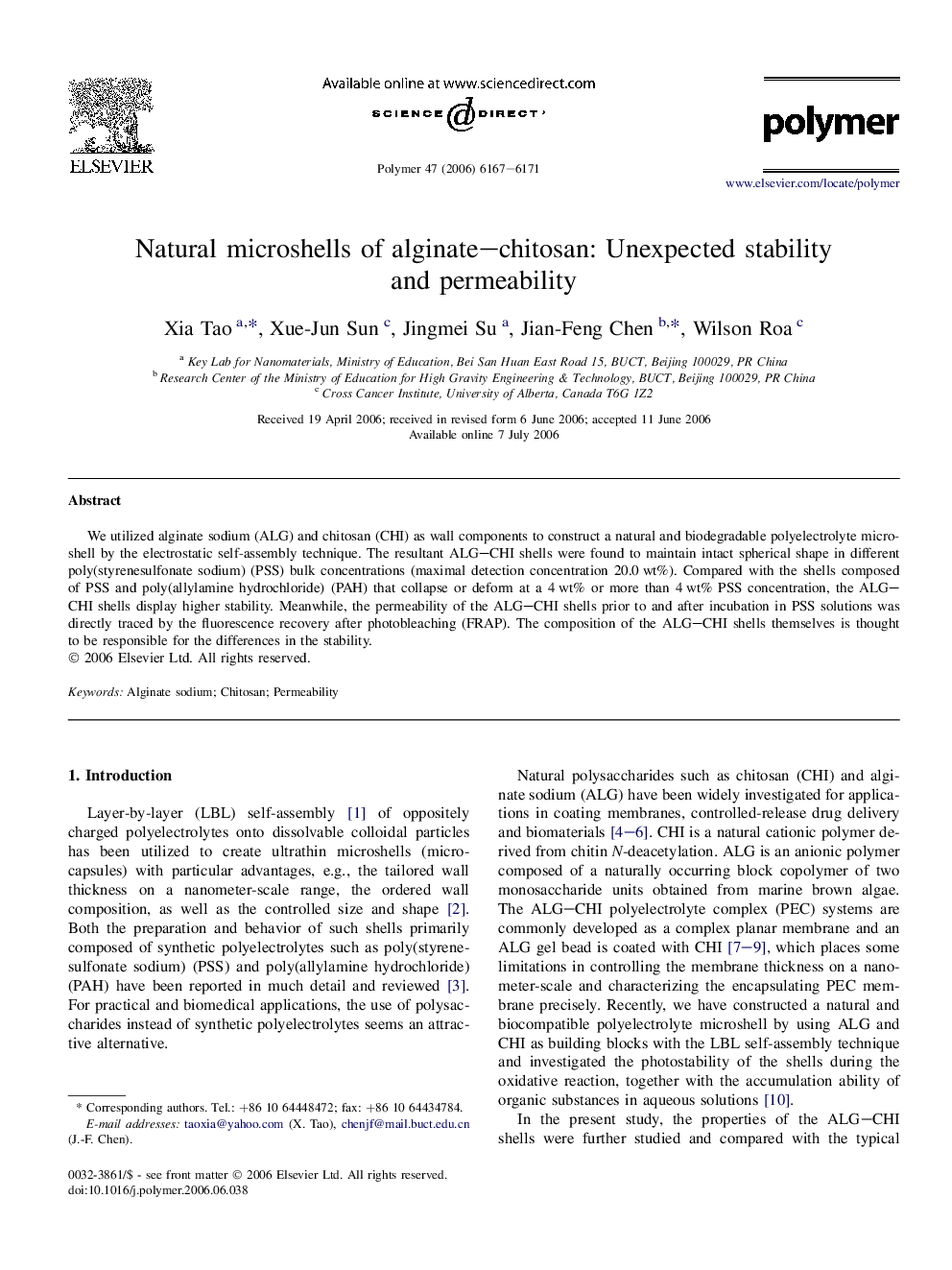| Article ID | Journal | Published Year | Pages | File Type |
|---|---|---|---|---|
| 5188988 | Polymer | 2006 | 5 Pages |
Abstract
We utilized alginate sodium (ALG) and chitosan (CHI) as wall components to construct a natural and biodegradable polyelectrolyte microshell by the electrostatic self-assembly technique. The resultant ALG-CHI shells were found to maintain intact spherical shape in different poly(styrenesulfonate sodium) (PSS) bulk concentrations (maximal detection concentration 20.0Â wt%). Compared with the shells composed of PSS and poly(allylamine hydrochloride) (PAH) that collapse or deform at a 4Â wt% or more than 4Â wt% PSS concentration, the ALG-CHI shells display higher stability. Meanwhile, the permeability of the ALG-CHI shells prior to and after incubation in PSS solutions was directly traced by the fluorescence recovery after photobleaching (FRAP). The composition of the ALG-CHI shells themselves is thought to be responsible for the differences in the stability.
Keywords
Related Topics
Physical Sciences and Engineering
Chemistry
Organic Chemistry
Authors
Xia Tao, Xue-Jun Sun, Jingmei Su, Jian-Feng Chen, Wilson Roa,
